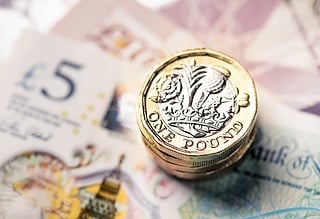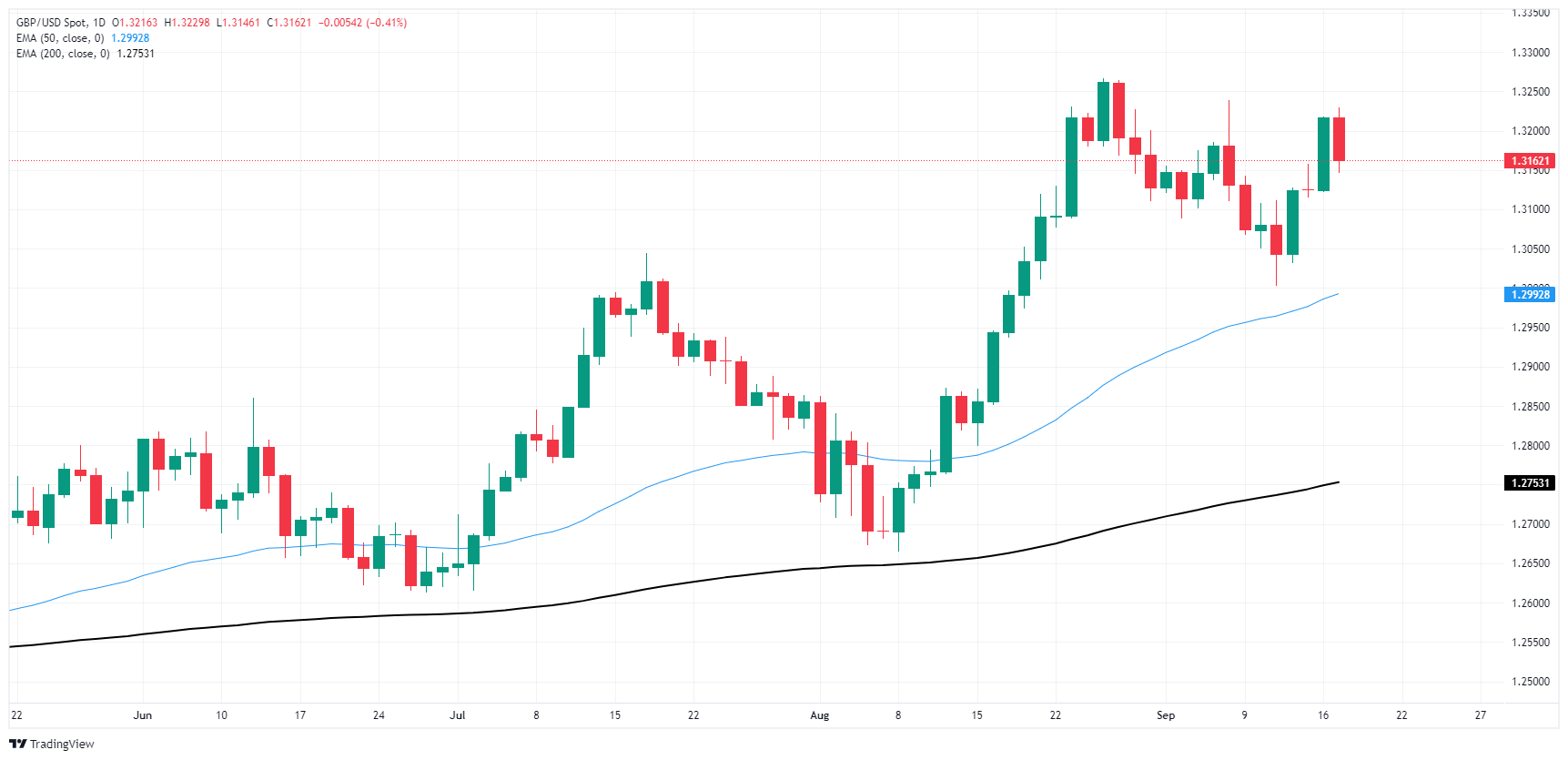GBP/USD pares back ahead of Fed’s midweek rate call
|
- GBP/USD eased back on Tuesday as markets brace for Fed appearance.
- UK CPI inflation data due early Wednesday, but unlikely to spark meaningful momentum.
- Markets are in a toss-up on Fed rate cut forecast.
GBP/USD pared back on Thursday, declining back toward 1.3150 as investors buckle down for the wait to Wednesday’s broadly-antiicpated rate cut from the Federal Reserve (Fed), where the US central bank is expected to kick off a rate cutting cycle.
UK CPI inflation figures are due early Wednesday, but the non-preliminary inflation print is unlikely to generate significant momentum with the figures all but fully priced in. Final UK CPI inflation figures for August are expected to print at 0.3% MoM compared to the previous -0.2% contraction, while the annualized CPI print is forecast to come in at 3.5% YoY, up from the previous 3.3%.
Forex Today: What if the Fed…?
US Retail Sales figures in August helped to keep market Fed expectations anchored, rising 0.1% compared to the median forecast of a -0.2% contraction. July’s Retail Sales figure was also revised higher to 1.1%, though core Retail Sales (excluding automotive purchases) only rose 0.1% compared to the 0.2% forecast.
The only meaningful event remaining on the data docket this week is the Fed’s upcoming rate call on Wednesday. Markets have been angling for a reduction in the fed funds rate since the beginning of the year when investors were clamoring for a March cut. According to the CME’s FedWatch Tool, rate markets are still split on the depth of the Fed’s first expected rate trim since early 2020, with rate traders pricing in 60% odds of a 50 bps double cut to kick off the Fed’s next rate cutting cycle. The remaining 40% of rate cut expectations are stacked on a more reasonable 25 bps.
GBP/USD price forecast
Cable’s 0.6% surge to kick off the trading week has fizzled on Tuesday, with daily candlesticks continuing to grind back into the high side, with multi-year highs sitting just north of 1.3250.
Despite an overall bullish tilt, GBP/USD price action is running the risk of getting caught in a bull trap, with the pair having run hot in a 1.66% technical recovery from the last swing low into the 1.3000 handle.
GBP/USD daily chart

Pound Sterling FAQs
The Pound Sterling (GBP) is the oldest currency in the world (886 AD) and the official currency of the United Kingdom. It is the fourth most traded unit for foreign exchange (FX) in the world, accounting for 12% of all transactions, averaging $630 billion a day, according to 2022 data. Its key trading pairs are GBP/USD, aka ‘Cable’, which accounts for 11% of FX, GBP/JPY, or the ‘Dragon’ as it is known by traders (3%), and EUR/GBP (2%). The Pound Sterling is issued by the Bank of England (BoE).
The single most important factor influencing the value of the Pound Sterling is monetary policy decided by the Bank of England. The BoE bases its decisions on whether it has achieved its primary goal of “price stability” – a steady inflation rate of around 2%. Its primary tool for achieving this is the adjustment of interest rates. When inflation is too high, the BoE will try to rein it in by raising interest rates, making it more expensive for people and businesses to access credit. This is generally positive for GBP, as higher interest rates make the UK a more attractive place for global investors to park their money. When inflation falls too low it is a sign economic growth is slowing. In this scenario, the BoE will consider lowering interest rates to cheapen credit so businesses will borrow more to invest in growth-generating projects.
Data releases gauge the health of the economy and can impact the value of the Pound Sterling. Indicators such as GDP, Manufacturing and Services PMIs, and employment can all influence the direction of the GBP. A strong economy is good for Sterling. Not only does it attract more foreign investment but it may encourage the BoE to put up interest rates, which will directly strengthen GBP. Otherwise, if economic data is weak, the Pound Sterling is likely to fall.
Another significant data release for the Pound Sterling is the Trade Balance. This indicator measures the difference between what a country earns from its exports and what it spends on imports over a given period. If a country produces highly sought-after exports, its currency will benefit purely from the extra demand created from foreign buyers seeking to purchase these goods. Therefore, a positive net Trade Balance strengthens a currency and vice versa for a negative balance.
Information on these pages contains forward-looking statements that involve risks and uncertainties. Markets and instruments profiled on this page are for informational purposes only and should not in any way come across as a recommendation to buy or sell in these assets. You should do your own thorough research before making any investment decisions. FXStreet does not in any way guarantee that this information is free from mistakes, errors, or material misstatements. It also does not guarantee that this information is of a timely nature. Investing in Open Markets involves a great deal of risk, including the loss of all or a portion of your investment, as well as emotional distress. All risks, losses and costs associated with investing, including total loss of principal, are your responsibility. The views and opinions expressed in this article are those of the authors and do not necessarily reflect the official policy or position of FXStreet nor its advertisers.